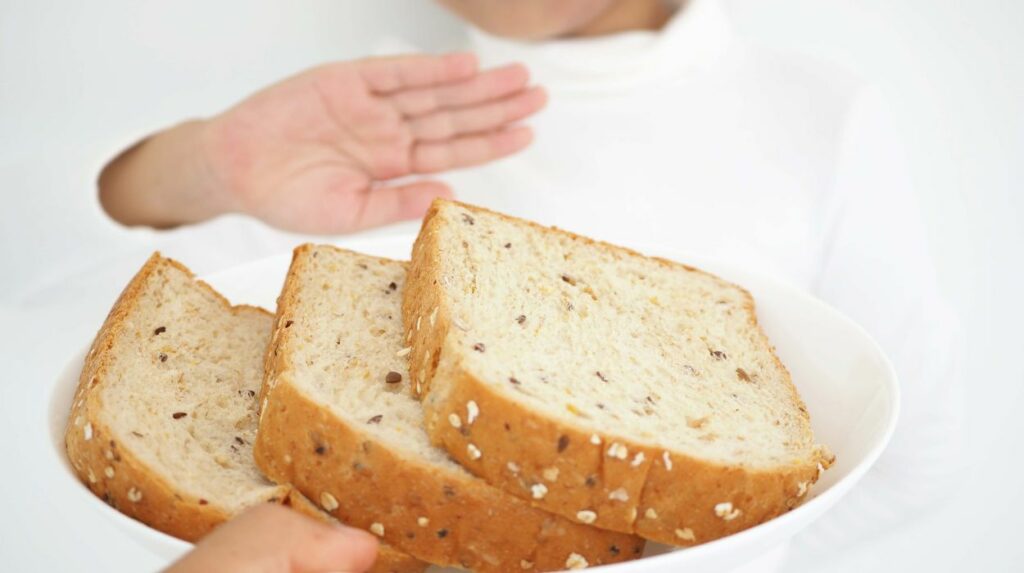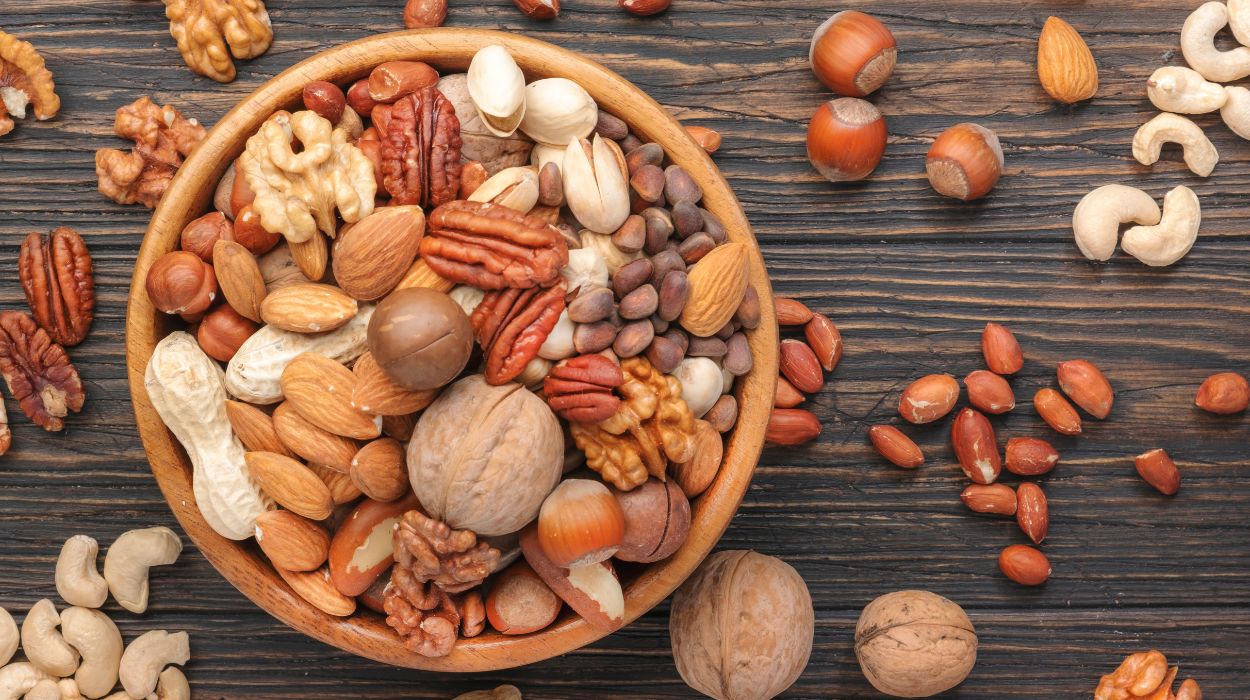Gluten Free Diet For Kids: Is It The Best Choice In 2024?

You may wonder if putting your family on a gluten-free diet is a good idea. Navigating it as an adult can be difficult but, in some cases, necessary, and it may be the same for children.
While in most cases eating gluten-free foods is unnecessary, if children are celiac or experiencing difficulty digesting gluten-containing products, they should not eat gluten-containing foods. A gluten-free diet can relieve symptoms. However, it’s important to be aware of potential risks associated with cutting out certain food groups and nutrients. It is strongly advised to consult a medical professional before starting your child on this diet because it is designed to be therapeutic for those who need therapy for gluten issues.
If needed, however, what is a good gluten-free diet for children that isn’t just all vegetables, nuts, and seeds? And are some gluten-free foods for kids better or worse than others? Let’s take a look.
Is A Gluten-Free Diet Really Good For Children?
For growing children, a gluten-free diet is not just a casual menu strategy: it is a therapy for
- Celiac disease
- Gluten sensitivities
- Gluten allergy
- Wheat allergies.
Thus, a gluten-free diet is only good for children who have an issue digesting gluten. It is a complete elimination of wheat, rye, and barley. For children who have no malabsorption issues — when it comes to gluten — the diet can be too restrictive and cause nutritional deficiencies.
Why Some Kids Should Avoid Gluten

Children who should avoid gluten include those with celiac disease, non-celiac gluten sensitivity,[1] and wheat allergies. For children with celiac disease, even small amounts of gluten can cause damage to the intestines.
Celiac disease can happen at any time in a person’s life, from childhood to adulthood. Yet, its appearance centers on two main age groups:[2] first, eating gluten within the first two years of life for some and, second, during a person’s twenties or thirties.
To determine whether a child must avoid gluten, doctors may perform blood tests [3] to diagnose celiac disease or even biopsy the small intestine. Non-celiac gluten sensitivity is more challenging to diagnose, as it has similar symptoms to celiac disease but no reliable markers that show in blood tests.
Treatment of celiac disease involves completely eliminating gluten from the diet, and the treatment is lifelong. Children with non-celiac gluten sensitivity may also benefit from the low-FODMAP diet,[4] since diagnosis of gluten sensitivity is more accurate with a low-FODMAP diet. This indicates some cross-reactivity.
It has been suggested that children with autism may also benefit from gluten-free diets, though there is insufficient evidence to support this.[5] It has also been shown that a gluten-free diet can result in weight loss, though it is not necessarily an appropriate weight-loss diet for kids.
If a child is healthy and not struggling to digest gluten-containing products, then it is not recommended,[6] as it can be nutritionally inadequate. Also, its high glycemic index may lead to metabolic syndrome or diabetes.
What Is A Gluten-Free Diet?

Gluten-free is a diet that eliminates the consumption of food containing gluten, a protein found in various kinds of wheat. Gluten-free products are often recommended for people with celiac disease,[7] an autoimmune disorder that causes severe digestive problems when gluten is consumed.
It become increasingly popular over the past decade as more research has been conducted into the potential health benefits[8] of eating fewer or no gluten-containing foods.
While a strict gluten-free diet is usually only necessary for people with celiac disease and non-celiac gluten sensitivity, some people have adopted a gluten-free lifestyle for reasons including weight loss or feeling better. Yet, going gluten-free unnecessarily can have adverse effects on those without proven gluten-related diseases. With or without gluten issues, you should consider a kid’s daily multivitamin.
Best Gluten-Free Foods For Children To Try
Gone are the days when gluten-free foods were hard to come by. With the popularity of the diet, more gluten-free products are now on supermarket shelves to cater to those who need to or prefer to avoid gluten.
Some of the most fun gluten-free options for kids include:
- Gluten-free bread, bagels, and pizzas. These can all be found in health food stores and some major supermarkets.
- Quinoa and rice flour are great substitutes for wheat flour when baking and making dishes like pancakes or muffins.
- Pasta made from corn, quinoa, lentils, or beans instead of wheat.
- Potato chips, popcorn, and other snack foods, like crackers, are made without wheat flour.
- Gluten-free cereals such as Rice Krispies or cornflakes.
- A gluten-free meal delivery service if you are short on time!
However, these may not be the healthiest options when you consider the brand’s sugar content or your own added sugar. Also, given that gluten-free diets can cause nutritional inadequacies, the best gluten-free foods for kids[9] are actually naturally gluten-free foods, such as fresh fruits and vegetables, legumes, and quality protein sources, coupled with a multivitamin for kids or vitamin B supplements.
Processed foods that are designated as gluten-free foods often contain a lot of hidden sugars, preservatives, and additives. It is essential to read labels carefully to find the healthiest options for your family.
Foods To Avoid On Gluten-Free Diets
If you cannot eat gluten, foods to avoid include:
- All wheat-based products, including pasta, breads, pastries, and cakes.
- Anything containing barley, rye, spelt, and semolina.
- Baked goods containing wheat germ or wheat bran.
- Soy sauce and other condiments that contain hydrolyzed wheat protein or malt vinegar.
- Breakfast cereals containing wheat, rye, spelled, or barley.
- Meats such as hotdogs and lunch meat that have been processed with wheat or barley.
- Sourdough breads and bagels.
- Supplements and protein powders containing gluten. Instead, use gluten-free protein powders.
When shopping for gluten-free foods, look for items certified gluten-free by the Celiac Disease Foundation or clearly stated on the label that they are gluten-free. This will help avoid any products that may have been processed in a facility that produces gluten-containing products, which may cause cross-contamination.
Be sure to ask the server if the menu items you’re considering are gluten-free in restaurants or when eating out. It’s also a good idea to ask what ingredients are used in a dish and judge for yourself, just in case the server is unaware of certain foods containing gluten, such as soy sauce.
Tips To Make The Gluten-Free Diet A Little Easier For Kids
A gluten-free food can be a challenge as an adult but even more so for kids, who may feel like they are missing out and unable to enjoy the same foods as their peers. To make gluten-free eating easier for your kids, try including as many of their favorite foods as possible in coordination with substituting naturally gluten-free alternatives. Find some tasty recipes that can be easily adapted for gluten-free diets, and get the kids involved in cooking, too.
Speak to teachers and other parents to let them know of your child’s dietary requirements. Most parents are more than happy to ensure their child’s lunch box or birthday party table is gluten-free so everyone can enjoy food safely.
Conclusion
Giving your kids a naturally gluten-free diet should only be considered if your child has been diagnosed with celiac disease or non-celiac gluten sensitivity or is allergic to wheat. Restricting the intake of certain food groups when it is not necessary, however, can lead to deficiencies in your child’s diet.
If your kid does need to start eating gluten-free, it doesn’t have to be boring. With the right recipes and ingredients, you can make sure they enjoy delicious meals that are safe and nutritious.
Frequently Asked Questions
Gluten-free diets are safe for kids and teens if properly implemented and nutritionally supplemented; it is necessary if your child or teenager has issues with gluten exposure. If your child or teen is not gluten-intolerant or celiac, then it is not an appropriate diet.
A gluten-free diet is healthier for only those who cannot digest gluten, as it prevents damage to the intestines. It is not necessarily healthier for everyone.
The main disadvantage of a gluten-free diet is that it can be restrictive and eliminate whole food groups that deprive one of vital nutrients. It also has a higher glycemic index than a more balanced diet.
Whole, unprocessed gluten-free foods such as fruit, vegetables, legumes, and lean proteins.
+ 9 Sources
Health Canal avoids using tertiary references. We have strict sourcing guidelines and rely on peer-reviewed studies, academic researches from medical associations and institutions. To ensure the accuracy of articles in Health Canal, you can read more about the editorial process here
- Maria Raffaella Barbaro, Cesare Cremon, Stanghellini, V. and Barbara, G. (2018). Recent advances in understanding non-celiac gluten sensitivity. F1000Research, [online] 7, pp.1631–1631. doi:https://doi.org/10.12688/f1000research.15849.1.
- Yasin Şahin (2021). Celiac disease in children: A review of the literature. World Journal of Clinical Pediatrics, [online] 10(4), pp.53–71. doi:https://doi.org/10.5409/wjcp.v10.i4.53.
- Lebwohl, B. and Rubio–Tapia, A. (2021). Epidemiology, Presentation, and Diagnosis of Celiac Disease. Gastroenterology, [online] 160(1), pp.63–75. doi:https://doi.org/10.1053/j.gastro.2020.06.098.
- Barone, M., Gemello, E., Maria Teresa Viggiani, Cristofori, F., Renna, C., Iannone, A., Alfredo Di Leo and Francavilla, R. (2020). Evaluation of Non-Celiac Gluten Sensitivity in Patients with Previous Diagnosis of Irritable Bowel Syndrome: A Randomized Double-Blind Placebo-Controlled Crossover Trial. Nutrients, [online] 12(3), pp.705–705. doi:https://doi.org/10.3390/nu12030705.
- Eman Alamri (2020). Efficacy of gluten- and casein-free diets on autism spectrum disorders in children. Saudi Medical Journal, [online] 41(10), pp.1041–1046. doi:https://doi.org/10.15537/smj.2020.10.25308.
- Marciniak, M., Aleksandra Szymczak-Tomczak, Dagmara Mahadea, Eder, P., Agnieszka Dobrowolska and Iwona Krela‐Kaźmierczak (2021). Multidimensional Disadvantages of a Gluten-Free Diet in Celiac Disease: A Narrative Review. Nutrients, [online] 13(2), pp.643–643. doi:https://doi.org/10.3390/nu13020643.
- AK;Lebwohl, T. (2008). Celiac Disease. [online] Available at: https://pubmed.ncbi.nlm.nih.gov/20301720/ [Accessed 12 Oct. 2023].
- Niland, B. and Cash, B.D. (2018). Health Benefits and Adverse Effects of a Gluten-Free Diet in Non–Celiac Disease Patients. Gastroenterology & Hepatology, [online] 14(2), p.82. Available at: https://www.ncbi.nlm.nih.gov/pmc/articles/PMC5866307/ [Accessed 12 Oct. 2023].
- Penagini, F., Dilillo, D., Meneghin, F., Chiara Mameli, Fabiano, V. and Gian Vincenzo Zuccotti (2013). Gluten-Free Diet in Children: An Approach to a Nutritionally Adequate and Balanced Diet. Nutrients, [online] 5(11), pp.4553–4565. doi:https://doi.org/10.3390/nu5114553.



